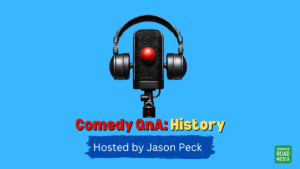It struck me that whilst there is a lot of information out there on how to make a good presentation including adding humour like you would if you were to learn stand-up comedy, effective delivery and the Dos and Don’ts of PowerPoint with 101 Presentation Hacks, one of the important areas of speechmaking that often seems overlooked is that of etiquette.
When it comes to learning to make good presentations, etiquette and the correct forms of address are well important innit (I hope you realise I’m being facetious). I can only do with etiquette as it relates to my own country and my country is England so for those of my readers who are outside the U.K. Forgive me if this post comes across a bit… la-di-da.
Hopefully you’ll avoid the mistake that Kate Middleton’s mother made when she met the Queen. Carole Middleton said “pleased to meet you”, whereas she should’ve said Your Majesty and thereafter referred to her as Ma’am.
If you’re having to know the correct forms of address for learning to make a good presentation, then the chances are high that if you’re addressing a Monarch you are likely to meet them afterwards. (Note: At the time of writing Kate Middleton is Prince Williams’ girlfriend)
Here’s a quick Etiquette Cheat Sheet if you ever find yourself in a formal occasion where you have to give a speech.
1) Chairman. The first person you address is the person chairing the event. So you would say Mr. Chairman, Madame Chairman or you could even use Honoured Chairperson. If it’s a President (doesn’t have to be of a country) it would be Mr. President, Madam President.
2) Royalty. The way to address a ruling sovereign is Your Majesty. The correct way to address any other member of the Royal Family would be Your Royal Highness.
3) Other Dignitaries. Next you would address any other dignitaries that may be present in the room. My Lord Bishop, Mr or Madame Mayor and so on.
4) Other speaker. Here’s where you would thank the person who delivered a speech prior to yours. As though your speech was in response to theirs. For our example we’ll use the motivational speaker, Anthony Robbins,
5) Everyone else. This is the final part of the address that would include everyone else in the room. You would also include any Lords, Ladies, or Lairds here as well as the regular folk. So you would get “my Lords, Ladies and Gentlemen.
Now assuming all of those peeps are in the room you’d deliver your opening like this:
“Mr. Chairman, Your Majesty, My Lord Bishop, Mr. Mayor, Mr. Anthony Robbins, my Lords, Ladies and Gentlemen.”
That will really help set you on the path towards making a good presentation.
What about all the other Riff-Raff?
What happens if there are other titled people in the room? If there’s a Duke or a Marchioness they would be address as My Lord Duke or My Lady Marchioness. Vice-Presidents would be a Mr or a Madame. A Prime Minister would be addressed as such.
If there are representative of the Church present, whatever your personal religious views, they would be address as follows; a Archbishop would be “Your Grace”, the Dean is “Your Very Reverend Sir” and an Archdeacon would be Venerable Sir. An Ambassador would be addressed as Your Excellency and would be referred to as Sir or Madam thereafter.
As a side note sometimes people aren’t quite keen on delivering the correct opening at a Toastmasters International function. People get blasé about it, or they don’t shake hands or side-step it altogether.
The point about it is that it’s training for the correct forms of address should you need to know them.



